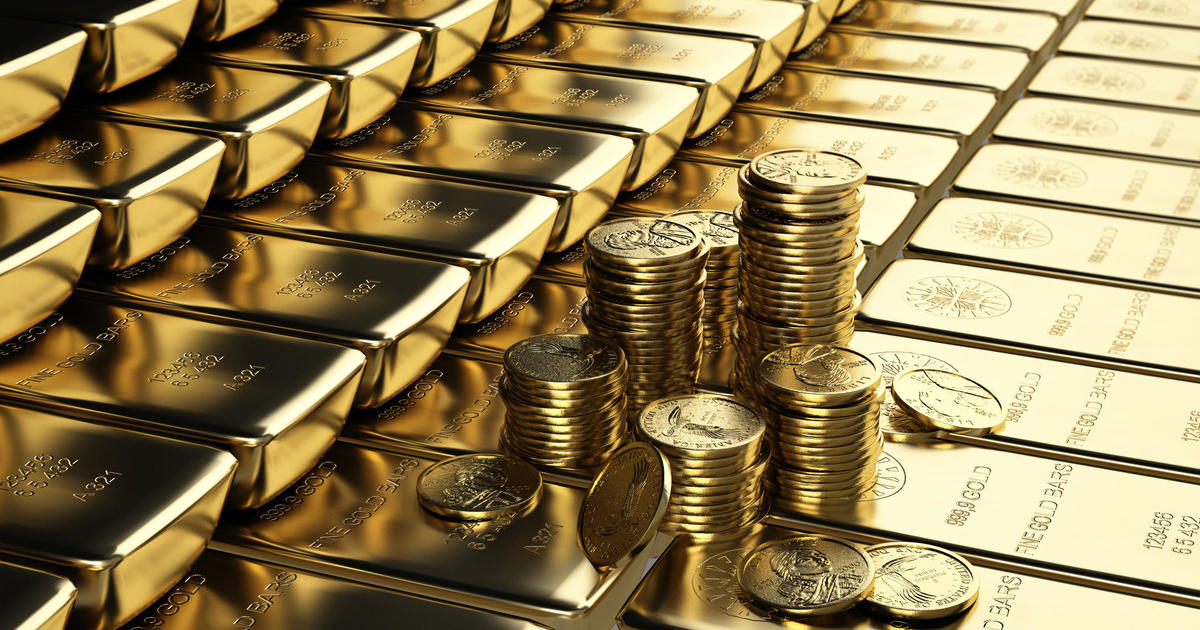Gold and silver investing: Everything to know
While the stock market is showing signs of recovery and inflation is cooling, neither has returned to pre-pandemic levels. Further, the recent bank failures have sparked new concerns in the minds of Americans.
During times of financial uncertainty, investors have long turned to precious metals as safe-haven assets.
"Investing in precious metals offers a hedge against inflation and diversification because they're uncorrelated to other asset classes," says Josh Dudick, a portfolio manager.
But what should you know before investing in gold or silver? it's important to understand the ins and outs of gold and silver investing in order to get the greatest return on your investment. Start by requesting a free information kit here to learn more about this unique investment opportunity.
Gold and silver investing: Everything to know
Here's what you should know about investing in these two precious metals.
Investing in gold
The stock market took a dive as the pandemic began, but gold prices saw an inverse effect. The price per ounce skyrocketed from about $1,550 in January 2020 to $2,036 in July 2020. Prices have fluctuated since but remain elevated, currently sitting at about $1,950 per ounce.
When should you invest in gold?
Gold prices typically increase when events trigger financial uncertainty.
"Because many professional investors trade gold, it often rises more significantly during periods of anticipated inflation but not necessarily during the inflationary periods themselves," explains Dudick.
It's best if you can buy gold when the price is relatively low — before it spikes due to widespread concern about a particular event, like a bank failure or record-breaking inflation rates.
Request a free investment guide now to explore your options.
How can you invest in gold?
You can buy the physical asset, trade futures and options in the commodities market, or buy shares of a gold ETF, IRA or mutual fund. Each option has its pros and cons. For example, if you opt to buy physical assets (e.g. bars, coins, jewelry), you'll need to transport, store and secure them. Gold ETFs, on the other hand, don't require physical handling of the asset, but do often come with a small management fee and require some familiarity with buying and selling ETFs.
How much should you invest in gold?
Purchasing gold is often cited as a way to diversify your portfolio, but how much should you invest?
"The percentage of holdings certainly depends on the investor's risk tolerance and investment goals," says Barry Weinstein, founder and CEO of VolatilityMarkets. "Even so, as a general benchmark, investors could hold 5% to 10% of their total portfolio in gold and silver."
When should you avoid investing in gold?
It's not always an ideal time to buy gold.
"Investors should be careful not to 'buy the highs' without regard to how gold has recently trended based on economic expectations," says Dudick. He adds, "The primary drawback of investing in gold is that it doesn't provide any interest or income. As interest rates increase, gold becomes less attractive to investors as the opportunity cost of investing their money in interest accounts or bonds becomes more significant."
Investing in silver
The price of silver tends to follow the price of gold. However, it's an industrial metal so it's more vulnerable to a recession. It's also worth far less per ounce.
Silver's price rose from $21.18 per ounce In January 2020 to $33.33 per ounce by August 2020. It, too, has remained elevated since and currently sits around $23.23 per ounce.
When should you invest in silver?
Like gold, silver prices tend to rise during times of inflation and financial uncertainty. As a result, it's best to invest when prices are relatively low and you anticipate them to increase.
You may also want to invest in silver over gold if you're on a tight budget or are looking for the chance for a higher return in a shorter period. The price of silver has historically been more volatile.
"If looking for pure upside potential, silver may be a smarter purchase," says Anton A. Bogdanovan, an appraiser and the senior editor at auction platform EBTH, Inc. However, with a higher upside potential, comes a higher risk for loss.
How can you invest in silver?
Similar to investing in gold, there are multiple ways to invest in silver. You can purchase physical coins or bullion, invest in silver futures, invest in ETFs that own silver or silver miners or purchase stocks of companies that mine silver.
How much should you invest in silver?
The general rule of thumb is to invest no more than 5% to 10% of your portfolio in precious metals, including gold and silver.
When should you avoid investing in silver?
It's best to avoid investing in silver when the prices are relatively high and expected to drop. Review the historical performance and keep a finger on the pulse of the market to gauge when you can buy low.
"Silver tends to perform well during times of economic uncertainty, but is also heavily influenced by industrial demand. Therefore, it may not be the best investment during periods of economic stability when industrial demand for silver may be lower," adds Adrian Lawrence, Portfolio CFO at FD Capital Recruitment.
While gold tends to be less volatile and more liquid than silver, both can have a place in a well-diversified portfolio. In either case, prices are relatively high right now, so if you're considering making the move into precious metals, you may want to hold off until prices dip or seek advice from a financial advisor.




